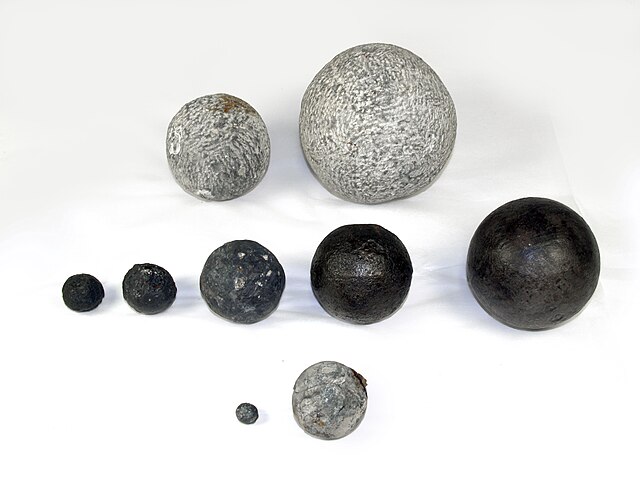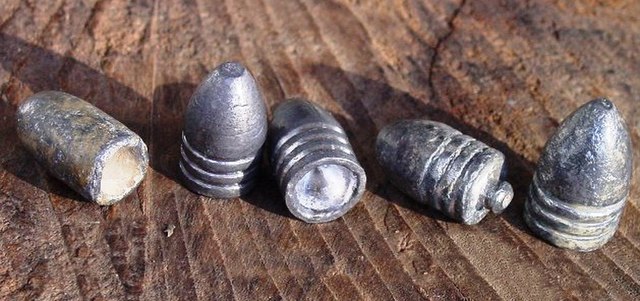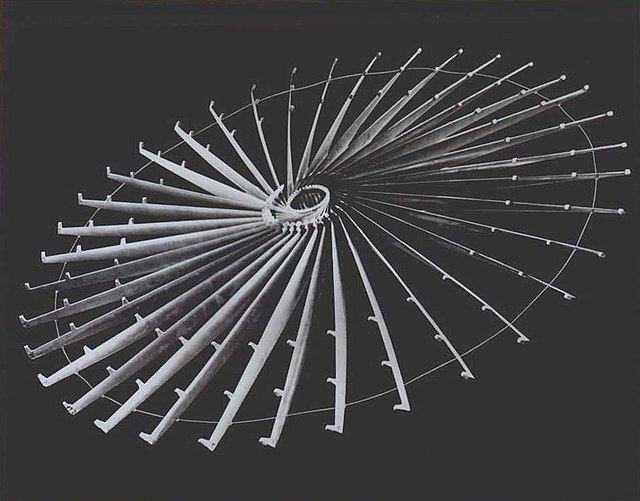A bullet is a kinetic projectile, a component of firearm ammunition that is shot from a gun barrel. They are made of a variety of materials, such as copper, lead, steel, polymer, rubber and even wax; and are made in various shapes and constructions, including specialized functions such as hunting, target shooting, training, and combat. Bullets are often tapered, making them more aerodynamic. Bullet size is expressed by weight and diameter in both imperial and metric measurement systems. Bullets do not normally contain explosives but strike or damage the intended target by transferring kinetic energy upon impact and penetration.
7.5×55mm Swiss full metal jacket, armor piercing, and tracer, spitzer projectiles. The three bullets on the right show cannelure evolution
Round shot from the 16th century Mary Rose English warship, showing both stone and iron ball shot
Matchlock musket balls, alleged to have been discovered on the battlefield of Naseby (1645)
Minié ball ammunition
A kinetic energy weapon is a projectile weapon based solely on a projectile's kinetic energy to inflict damage to a target, instead of using any explosive, incendiary/thermal, chemical or radiological payload. All kinetic weapons work by attaining a high flight speed — generally supersonic or even up to hypervelocity — and collide with their targets, converting its kinetic energy and relative impulse into destructive shock waves, heat and cavitation. In kinetic weapons with unpowered flight, the muzzle velocity or launch velocity often determines the effective range and potential damage of the kinetic projectile.
The Homing Overlay Experiment used a metal fan that was rolled up during launch and expanded during flight. The metal has five times as much destructive power as an explosive warhead of the same weight.





